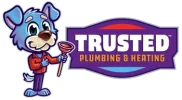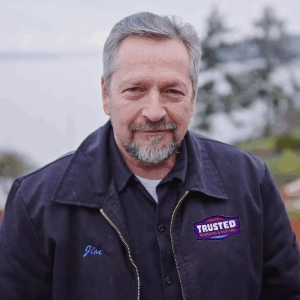Where Does Sewer Water Go? A Guide to Wastewater Treatment
Have you ever wondered where does sewer water go once it disappears down your toilet, shower, or kitchen sink? It may seem like magic, but behind that disappearing act is a complex, highly engineered process that ensures wastewater is safely removed, treated, and released back into the environment. For Washington homeowners, especially those in cities like Kent, Renton, Tacoma, and West Seattle, understanding how local sewer systems work is key to maintaining a healthy home and community.
At Trusted Plumbing and Heating, we specialize in helping Washington residents stay informed and protected when it comes to their plumbing systems. This in-depth guide explores exactly where does sewer water go, how treatment systems operate, and what you can do to prevent sewer problems in your home.
What Is Sewer Water and Where Does It Come From?
Sewer water, also known as wastewater, is water that carries waste from homes, businesses, and industries. This includes water that drains from toilets, bathtubs, sinks, dishwashers, washing machines, and commercial activities.
Common Sources Include
-
Toilet flushes carry human waste
-
Shower and bathwater containing soap, dirt, and body oils
-
Kitchen sink and dishwasher water containing grease, food scraps, and detergents
-
Laundry wastewater is filled with lint, dirt, and cleaning chemicals
-
Industrial and commercial runoff, including chemicals and oils
All of this used water combines and flows through an intricate network of underground pipes into treatment systems that make it safe to return to the environment.
What Are the Main Types of Sewer Systems in Washington?
Combined Sewer Systems
In older parts of cities like Seattle and Tacoma, combined sewer systems are common. These systems collect both sanitary wastewater and stormwater runoff in the same pipe. While efficient in dry weather, heavy rains can overwhelm these systems and cause combined sewer overflows, which release untreated sewage into waterways.
Separate Sewer Systems
More modern neighborhoods, especially in Renton and Kent, use separate systems for wastewater and stormwater. This significantly reduces the risk of overflow and contamination.
Septic Systems (in Rural Areas)
Outside city limits, many Washington homes use septic tanks. These private systems treat wastewater on-site and are common in less densely populated areas. Regular maintenance is essential for keeping septic systems functional and safe.
Where Does Sewer Water Go After You Flush or Drain It?
Once water goes down the drain, its journey begins. So exactly where does sewer water go?
Step 1: Travels Through Residential Sewer Pipes
Your home’s plumbing system directs wastewater into lateral sewer lines under your property.
Step 2: Flows to Municipal Sewer Mains
These lateral lines connect to the city’s main sewer network running beneath the streets.
Step 3: Enters Pumping Stations (If Needed)
In areas where gravity can’t carry wastewater all the way, pumping stations lift the water to higher elevations for continued travel.
Step 4: Arrives at a Wastewater Treatment Facility
Municipal systems like those in Renton or Tacoma receive the wastewater for processing.
Step 5: Undergoes Physical, Biological, and Chemical Treatment
Solids are removed, microbes digest organic matter, and chemicals neutralize pathogens and nutrients.
Step 6: Cleaned Water Is Released
The treated water is safely discharged into rivers, lakes, or Puget Sound, completing the cycle of where does sewer water go.
Step 7: Treated Solids Are Processed or Repurposed
The remaining sludge is dried, treated, and often used in agriculture or energy production.
How Do Wastewater Treatment Plants Work in Washington State?
Primary Treatment
Large debris like wipes, plastics, and sand are screened and settled out of the wastewater.
Secondary Treatment
Bacteria and microorganisms break down organic waste in large aerated tanks.
Tertiary Treatment
Advanced filtration removes nutrients and pathogens. Chlorination, UV light, or ozone may be used to disinfect the water before it’s discharged.
Common Facilities in the Region
-
South Treatment Plant (Renton)
-
Tacoma Central Wastewater Treatment Plant
-
Brightwater Treatment Plant (serving north King County)
Each facility plays a critical role in managing where does sewer water go from nearby communities.
How Does Rainwater Affect Sewer Systems in Greater Seattle?
Inflow and Infiltration (I&I)
Rainwater can seep into sewer pipes through cracks, joints, or faulty connections. This adds excess volume to the system, making treatment more challenging.
Combined Sewer Overflow (CSO) Risks
In cities like Seattle with older systems, heavy rain can exceed capacity and cause untreated wastewater to discharge into local waterways.
Local Solutions Include
-
Green roofs
-
Rain gardens
-
Permeable pavement
-
Stormwater separation upgrades
These upgrades help reduce overflow and improve where does sewer water go during storms.
What Are the Environmental Impacts of Sewer Water?
Properly treated sewer water is safe to release into nature. But when systems fail or overflow:
-
Contaminants can harm aquatic life
-
Algae blooms may form from excess nutrients
-
Public health is at risk due to exposure to bacteria and viruses
Strong infrastructure ensures where does sewer water go won’t damage the environment.
What Are the Signs of a Sewer Problem at Home?
-
Slow draining sinks or tubs
-
Gurgling noises from drains
-
Unpleasant sewage smells indoors or in the yard
-
Frequent toilet backups
-
Damp patches in your yard or basement
-
Sudden rodent or insect infestations
If you notice any of these signs, don’t wait to find out where does sewer water go when it escapes into your home.
What Should You Do If You Suspect a Sewer Backup in Washington?
-
Stop using water in your home immediately
-
Inspect the cleanout cap (usually located in the yard) for signs of blockage or overflow
-
Call a licensed plumber like Trusted Plumbing and Heating right away
A fast response prevents more damage and restores the flow of where does sewer water go safely.
How Much Does Sewer Line Repair or Replacement Cost in Washington?
Average Costs
-
Repair: $2,000 to $6,000
-
Full replacement: $4,000 to $15,000
Cost Factors
-
Depth and location of the pipe
-
Pipe material (clay, cast iron, PVC)
-
Required permits and inspections
-
Accessibility of the repair site
Trenchless Sewer Repair
-
Less invasive
-
Faster turnaround
-
Often costs $100 to $250 per linear foot
Sewer Camera Inspections
-
Usually $200 to $400
-
Helps locate clogs, breaks, or root intrusion before digging
A proper inspection ensures you fully understand where does sewer water go and what’s blocking its path.
Why Choose Professional Sewer Services in Washington?
Why Trusted Plumbing and Heating Stands Out
-
Fully licensed and insured
-
Compliant with all Washington state plumbing codes
-
Advanced diagnostics with sewer camera inspections
-
Extensive knowledge of local sewer layouts
-
Proven track record across the Seattle metro area
When it comes to fixing issues with where does sewer water go, hiring a pro keeps your home safe and compliant.
Tips to Prevent Sewer System Issues in Your Home
-
Only flush toilet paper and human waste
-
Keep fats, oils, and grease out of your sink
-
Install drain strainers in showers and sinks
-
Get your plumbing inspected every 1–2 years
-
Consider a backwater valve to prevent flooding during heavy rains
Preventative maintenance helps control where does sewer water go and keeps your system healthy.
Serving the Greater Seattle Region with Trusted Sewer Services
Trusted Plumbing and Heating proudly supports homeowners and businesses in Renton, Kent, Tacoma, West Seattle, and surrounding cities across Greater Seattle. Our team understands the diverse infrastructure and plumbing needs of Western Washington homes.
Whether you’re trying to trace where does sewer water go, need an urgent sewer repair, or want to prevent backups before they start, we offer timely, professional, and reliable plumbing services.
Contact Trusted Plumbing and Heating Today
With Trusted Plumbing and Heating, you’re working with experienced local professionals committed to keeping your home safe and efficient. We specialize in all aspects of sewer line service, from inspections and cleaning to trenchless repairs.
We serve clients across Seattle, Renton, West Seattle, Kent, Tacoma, and nearby communities. Our team uses state-of-the-art equipment and local expertise to manage even the most complex sewer problems.
Get in touch today to learn more about our sewer services and find out exactly where does sewer water go after it leaves your home — and how we can help keep it flowing properly.
Call at (206) 207-5399 or get an estimate online.



